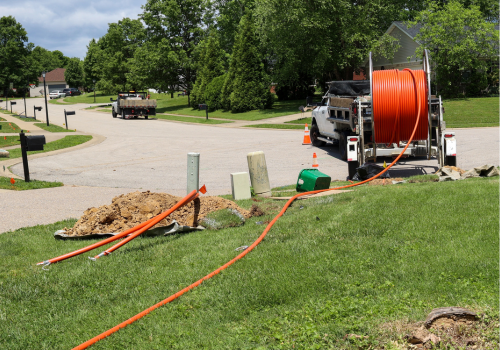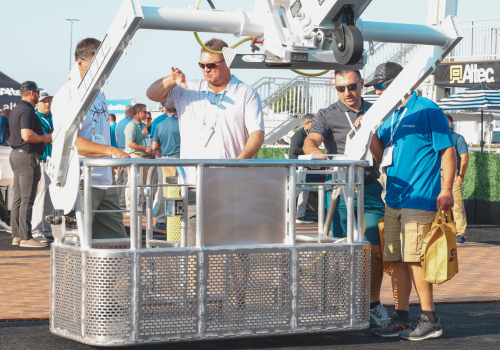We’ll share individual insights from each of our experts in a moment, but first here are three points they all emphasize.
1. Preventative maintenance: Absolutely essential
Preventative maintenance is as essential to successful business operations as fueling up machines. At the very least equipment should get the servicing specified by the OEM at the OEM-specified intervals. The demands of your operation may require more stringent preventative maintenance; the OEM program should be the least acceptable measure. A well-managed preventative maintenance program requires scheduling to minimize downtime, inventory management so that the right parts and supplies are on hand when needed but not so much inventory that the product lingers on the shelves, deciding whether to outsource preventative maintenance or keep it in-house, and keeping track of what was done when and what needs to be done next.
2. The false economy of will-fit and generic
Non-OEM products typically cost less than OEM-branded products, but you have no assurance they meet OEM performance specifications. A filter that spins on qualifies as “will-fit,” but that tells you nothing about the filter medium—the material it’s made of, how many pleats it has, how that material is supported—and what you see on the outside is not what dictates the performance of the product. Similarly, a glance at the API donut doesn’t mean a particular 15W-40 CK-4 oil is optimal for your equipment in your applications. In a mixed fleet, knowing the best product for every machine can be a challenge, which leads us to point #3.
3. Your dealer is your partner
You may be managing several machines, perhaps several dozen. Your dealer is involved in the care of hundreds, perhaps thousands of machines. Your dealer knows what works best, information gathered from dealer-performed servicing, and conversations with countless other equipment owners. Dealers’ successes depend upon their customers’ successes; allow them to participate in your mutual gains. Telematics makes this easier and more effective than ever.
And now, those individual insights from some of the top equipment manufacturers and service providers.
Bobcat
Mike Fitzgerald, Marketing Manager at Bobcat Company: dirty engine oil looks dirty, and it gets changed. Transmission fluid, hydraulic oil, and coolant typically don’t appear dirty and therefore may not get changed. But molecular shearing, additive breakdown and other changes are still happening. “Stick to the recommended service interval as a minimum regardless of the appearance of the fluid.”
Garrett Maurer, Director of Global Digital Product Management: the future is digital; harvesting and analyzing data are more advanced than ever. “We take the data and create insights for our customers from it.” On the other hand, “people are really good at spotting and managing exceptions and oddities and a good preventative maintenance program requires the active involvement of good people.”
Ditch Witch
Scott McKinley, Product Manager of Digging Systems and Service at Ditch Witch: proper preventative maintenance starts before service is ever undertaken and begins with the right tool. “Maximize component life with the right chain, the right bits,” or other ground-engaging tools with other equipment. He says the main wear components in a digging system are the chain rollers. If the rollers resemble an apple core or the pin becomes visible, it's time for replacement. Since the roller is constantly in use, regular inspections are essential. Understanding soil conditions is key to recognizing equipment limitations and establishing maintenance best practices.
John Deere
Mike Fulton, Service Marketing Manager, John Deere: A good preventative maintenance program is as comprehensive as it needs to be to yield the greatest return on preventative maintenance investment. “People undervalue inspections as well as telematics and fluid sampling.” Thorough inspections catch warning signs before a minor issue becomes a major problem. Abrasion of hydraulic hoses and electrical harnesses are examples. Telematics sees the inside of the machine and can include remote diagnostics. Fluid sampling identifies wear particles and contaminants to indicate both the source and the severity of the problem.
Sage Oil Vac
Chance Castillo, Corporate Sales Manager for Sage Oil Vac: lubrication is a major component of any preventative maintenance program in terms of both time and dollars, so finding efficiencies here can yield significant overall gains. “Any modern lube system adds efficiency to your preventative maintenance program. The most efficient solution depends on your specific operation.” He cites a customer in Michigan with a genset requiring 110 gallons of oil for each oil change. Switching from their conventional method to a Sage Oil Vac 2250 preventative maintenance Trailer cut an average of 96 minutes off what had been a 165-minute job, freeing up time for other tasks.
Vermeer
Clint Recker, Product Manager for Utility Horizontal Directional Drilling (HDD) at Vermeer: beyond the usual preventative maintenance for engines and hydraulics, HDD rigs have their own preventative maintenance needs. Sub Savers touch every piece of drill rod and if they’re worn, they can damage each rod. Look for jagged edges or rounded profiles; use a thread profile gauge for more accurate assessment. The drill rod can get bent. “To check, just roll the rod on your flatbed trailer.” Make sure the grease bucket is filled and functioning. Keep vise dies (jaws) clean and replace them when necessary. If clean dies leave slip marks on a rod instead of distinct teeth marks, it’s time to change the dies. Ribbons of mud on the drill rod indicate a worn rod wiper, which allows contamination buildup on the dies and in the rod box.
Volvo Construction Equipment
José Rosales, Head of Product Management—Maintenance for Volvo Construction Equipment: don’t get overwhelmed with information. Whereas some base-level telematics systems flood you with alerts that may be hard to decipher, “advanced telematics can prioritize alerts and clearly state them: what the problem is, how urgent it is and what the consequences are of ignoring it.” With their fluid analysis program, Volvo uses multiple technologies to identify wear metals, contaminants, and changes in fluid conditions specific to engine oil, transmission oil, hydraulic fluid, axles and brakes, coolant, and fuel, “then we provide easy-to-understand reports and insights to help customers make better decisions.”
Subscribe to The Utility Expo monthly newsletter to receive more industry insights like this.
Read Next
Tips for In-House, Dealership, and Outside Service of Fleet Maintenance
Preventative Maintenance Tips for Compact Equipment












